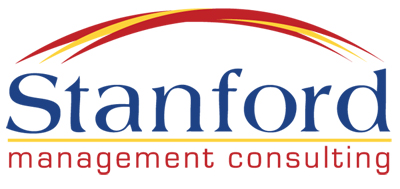 “Julia, my sales have increased so why haven’t my profits?”
“Julia, my sales have increased so why haven’t my profits?”
A profitable business begins with understanding what it takes to be profitable. Many business owners’ will focus on increasing sales and not on controlling expenses. The fastest path to profit is controlling expenses. If you are not paying attention to the business-side of your business, you are not as profitable as you could be. Remember the six business functions: Operations, Marketing and Communications, Sales, Administration, Human Resources, and Finance and Accounting all; play a role in the profitability of the company.
Profitability is simply a company’s ability to make a profit. It is a measure of success that a company is meeting the financial goals; it is the principal objective. Profit is the amount left over when all financial obligations have been met by the company, not the balance showing in the check book.
Top Ten Reasons Companies Are Not Profitable
There are hundreds of reasons businesses fail. A business without a positive profit margin will systematically put itself out of business. Pick up any business book and there are chapters filled with reasons for companies not to succeed. Lack of profitability is the number one reason businesses fail. A company that is not profitable cannot remain in business. The following are the top ten that we see at Stanford.
- Poor Planning – Planning is critical. If you don’t know where you are going, how do you know you got there? Many business owners will start with a business plan to get assistance from a bank or investor only to let the rest of the plan gather dust on a shelf. Without consistent planning you run the risk of failing to meet not only financial goals but marketing, sales, and operational goals. Business planning should be done each year and defined measurements for success should be set for all company goals. If you are not meeting these goals you are running the risk of not meeting a healthy profit margin, the whole reason you are in business.
- Out-Of-Control Growth – Growth is something we all dream of! It is the ultimate reward for hard work. If a business does not carefully control growth then it can be the beginning to the end. A well run business develops a good working model before opening new markets or adding more profit centers. Growing without planning and control can cause devastation to the company. Sometimes, less is more. Protecting profit is the key to positioning for growth.
- Poor Accounting Methods – Not knowing enough about the “books” leaves business owners not in control and in a constant state of confusion. Many have an elementary approach to business acounting and say, “I only want to know the bottom line.” They forget controling everything above the net profit on a profit and loss statement is the most important part of managing by the numbers. The profit and loss statement will talk to you- you need to learn how to listen! Many hire an accountant or a CPA to go over the books once a year in order to file income tax statements correctly. This does not produce a ture complete picture of the business. Usually, there are uncontrolled costs, spending, and profit leaks. That is why the statistics for business failures are so high for small and medium-sized businesses. People who use accurate financial reports to make their business decisions seldom fail. A profitable business rarely fails. The “books” are supposed to provide management with accurate, pertinent, up-to-date information that will guide the owner in running the business profitably.
- Uncontrolled Expenses – Now more than ever, lean companies are at an advantage. Controlling expenses is the fastest path to increasing profitability. A business that is profitable in a down economy will thrive in a healthy economy. Many business owners will ponder over falling revenue numbers too long before adjusting business expenses. If you manage expenses as a percent of revenue you will continue to manage profitability! The economy should change how you do business not if you do business.
- Inaccurate Job Costing – Inaccurate job costing compromises your profit potential. Failure to account for all costs creates waste and low profit margins. Once you have created an accurate estimate, you must also track changes that add expenses during the project or you will run the risk of not identifying all costs associated with the job, which in turn affects the profit of the job. Out of control costs or a lack of a cost control system has a negative impact on working capital, creates improper product pricing, and causes unfavorable variances resulting in high costs and low profit margins.
- Poor Administrative Procedures – As a business grows, you will start to need help tackling each area of the business. Without properly documented administrative procedures, the transition to having administrative staff can be bumpy. When things are not going as they should, some will say, “Tomorrow, I have to get organized.” Without knowing it the business owner is really saying “I have to put administrative procedures in place so I can function as a productive and profitable business”! Failing to identify administrative inefficiencies will keep a business from controling cost and increasing profits.
- No Operating Policy and Procedures – The lack of operating policy and procedures in a company, no matter the size, is the root of all evil! Your policy and procedures define what you do and how you do it. The policy is the “Why” and the procedure is the “How”. It is how you build a strong foundation for the business. Without this structure you will lack consistency and quality. A hap-hazard approach is a breeding ground for profit leaks which drain the profit right out of the business.
- Poor Management Practices – This translates into owners who cannot get out of their own way. You know them. They may be stubborn, afraid to make decisions because they may not be the right decisions, or to avoid conflict. They may be a perfectionist, greedy, or just insecure. Many owners recognize the problems but continue to make the same mistakes over and over, yet expecting a different result. Many owners lack focus, vision, planning, standards and everything else that goes into good management.
- Low Productivity – Every minute an employee is idle, the cost comes out of the profit dollar. Every minute of idle machine time, the cost comes out of the profit dollar. Every minute the materials or goods are not in motion, the cost comes out of the profit dollar. Low productivity = low profit. Most companies have the ability for higher productivity without adding more people. Planning and schedule management alone would increase the bottom line.
- Lack of Personnel Evaluation and Fair Compensation – Few business people are aware of the cost of inadequate supervision. Lack of personnel evaluations and fair compensation leads to low moral, and dissatisfied employees leads to turnover. The costs of replacing qualified personnel who quit, finding and training the replacement, and the dissatisfaction of customers are not shown on the P & L. Additional costs include wasted goods and materials and a decrease in productivity.There have been many studies on the needs and wants of employees. These studies have shown that knowing what is expected of them, having the tools they need to do the job, and being shown respect are just as important as pay. In fact, pay is often down on the list. A company who meets the needs of the staff and has a fair compensation builds loyalty which, in itself, improves the bottom line.
Profit Is Not A Bad Word
If you are not in business to make a profit then you have to ask yourself why you are in business at all. How long can you discount or give a product or service away before you have de-valued that product or service? It is very common for small business owners to judge their success on the balance in the check book or the end of year sales volume. It is neither.
Profit can only be defined as the difference between revenue and expenses. At Stanford, we prefer to teach our clients that profit is a predefined expense.
Revenue – Pre-Determined Profit = Controlled Expenses
Back to Basics Boot Camp | 360 Business Assessment
